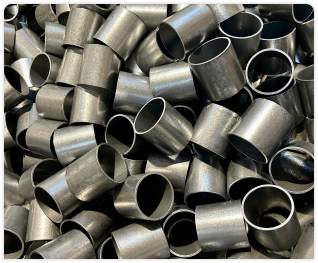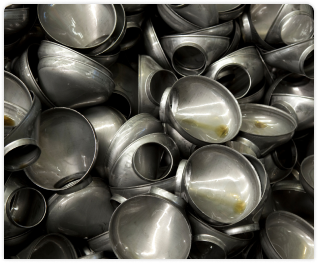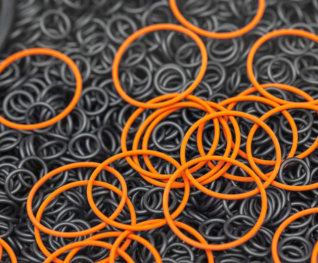Surface Finishing Processes
Our comprehensive surface finishing processes include degreasing, cleaning, deburring, burnishing, smoothing, radiusing, polishing, super finishing, and drying, each tailored to enhance the quality and functionality of components. These processes work together to prepare, refine, and enhance component surfaces, ensuring optimal performance, improved appearance, and long-term durability across a wide range of industrial applications, from precision engineering to high-volume manufacturing.


Vibratory finishing is a versatile and adaptable technique, suitable for a wide range of materials, including metals, plastics, and ceramics. Its ability to manage various geometries and achieve consistent surface finishes makes it a valuable tool across various industries, including manufacturing, aerospace, automotive, medical, and electronics.

Deburring is a crucial step in surface finishing, as it removes sharp edges, burrs, and other unwanted protrusions that can hinder functionality and cause safety hazards. Vibratory deburring employs a combination of mechanical action, abrasive media, and vibratory energy to effectively remove these imperfections.

Degreasing is essential for preparing surfaces for subsequent finishing processes and ensuring product cleanliness. Vibratory degreasing employs solvents or detergents in combination with vibration to effectively remove oil, grease, and other contaminants from metal and plastic components.


Smoothing involves refining the surface texture of a component, reducing overall roughness, and removing any coarse or uneven areas. Vibratory smoothing uses abrasive media and compounds to achieve a smoother, more uniform surface finish.

Descaling involves removing unwanted deposits like rust, scale, and oxides from metal surfaces. Vibratory descaling uses abrasive media, such as ceramic, beads or shot, to mechanically abrade the surface, removing these impurities and revealing the underlying clean metal.

Deflashing is the process of removing unwanted thin ridges or protrusions (flash) that form on plastic parts during the moulding process. Flash typically appears along the parting line, which is the meeting point of the two halves of the mould.

Surface protection is essential for extending the lifespan and performance of manufactured components. Vibratory processes can incorporate various protective coatings, to enhance corrosion resistance, wear resistance, and aesthetic appeal.

Polishing involves improving the surface finish by removing microscopic imperfections and imparting a smooth, mirror-like appearance. Vibratory polishing uses fine abrasive media, compounds along with vibration to achieve a high level of surface smoothness and lustre.

